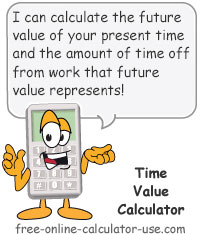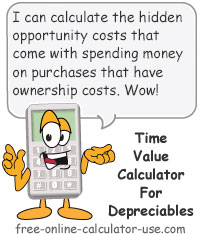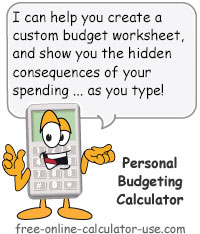IMPORTANT: Numeric entry fields must not contain dollar signs, percent signs, commas, spaces, etc. (only digits 0-9 and decimal points are allowed).
Click the Terms tab above for a more detailed description of each entry.
Step #1:
Enter your current age.
Step #2:
Enter the age you expect to retire at.
Step #3:
Enter your real or net hourly wage (what's left after taxes and work-related expenses).
Step #4:
Enter percentage return you expect to earn on your future investments.
Step #5:
Click the "Calculate Your Time Value" button. This will populate the time and value charts and display a written summary of the results.





Follow me on any of the social media sites below and be among the first to get a sneak peek at the newest and coolest calculators that are being added or updated each month.